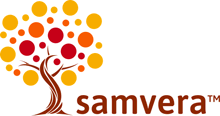About Hyrax
Questions and answers
- What is Samvera?
The Samvera Community is a global community of technologists who create and maintain repository software; you can’t install Samvera, but you can install the repository solutions we develop together including Avalon Media System, Hyrax, and Hyku. Institutions around the world rely on Samvera Community supported software to provide access to their digital content.
Samvera is also a community of practice where software developers and library technologists can support and learn from one another. We have active participation from metadata specialists, repository managers, user experience professionals, and others who contribute their expertise to ensure the software stays relevant and responsive to changing needs.
Samvera software is free and open source, available under an Apache 2 license. It offers flexible and rich user interfaces tailored to distinct content types on top of a robust back end – giving adopters the best of both worlds.
- What is Hyrax?
Hyrax is a repository engine that provides a rich set of features, including:
- Multiple file, or folder, upload
- Flexible user- and group-based access controls, including sharing with groups and individuals:
- Example: A file can be shared with a User Managed Group for viewing and downloading, or access can be at the editing level (i.e., anyone in the group would have editing rights to the metadata).
- Example: Permissions for visibility are, by default, open access. They can be changed to "Private," or to the institution level (i.e., Penn State only)
- Admin user privileges:
- Editing rights to pages where content can be dynamic
- Ability to configure featured works and featured researcher on home page
- Access to range of use and usage statistics
- User profiles, where users can also select files to feature in the profile
- User dashboard for managing files, including creation of collections
- Proxy deposit and transfer of file ownership
- Configurable, flexible workflows
- Forms for batch-editing metadata
- Google Analytics for usage statistics
- Full-text indexing and searching
- Faceted search and browse
- Digital preservation functionalities:
- Fixity checking
- Version control
- Characterization of uploaded files
- Who's using Hyrax, and for what purposes?
- Hyrax is used for a range of purposes including institutional repositories, data repositories, digital collections management, and digital archives. As Hyrax is open-source software that anyone can use freely, there's no way to tell exactly how many Hyrax users there are. We've seen Hyrax used by a diverse group of organizations including research libraries & archives, public media, art museums, and academic consortia. The Samvera Wiki maintains a list of example implementations of Hyrax as well as Hyku and Avalon Media System.
- How is Hyrax different from DSpace, Bepress, CONTENTdm, etc.?
- Hyrax is a repository solution that allows deposit of content via configurable workflows; description with customizable metadata; and user-level control over that content (upload, modify, delete content). Hyrax supports many of the same features provided by each of these systems.
- What does Hyrax cost?
- While it is difficult to put a dollar amount on a particular implementation of Hyrax, we know from the experiences of our community members that Hyrax repository solutions generally work well with at least a part-time developer and part-time sysadmin. As Hyrax is an open-source product, it would be useful for potential users to connect with the community about resourcing concerns for a particular implementation scenario.
